Welcome to our expert guide on supercharging your milkfish farm and achieving maximum production! This comprehensive blog will provide you with simple and easy-to-read data and accurate summaries to help you boost your milkfish production to new heights. Milkfish, also known as Chanos chanos, is a popular aquaculture species, and we understand the importance of optimizing its production. So, let’s dive in and explore practical strategies, tips, and insights that help you to enhance your milkfish farm’s productivity like never before!
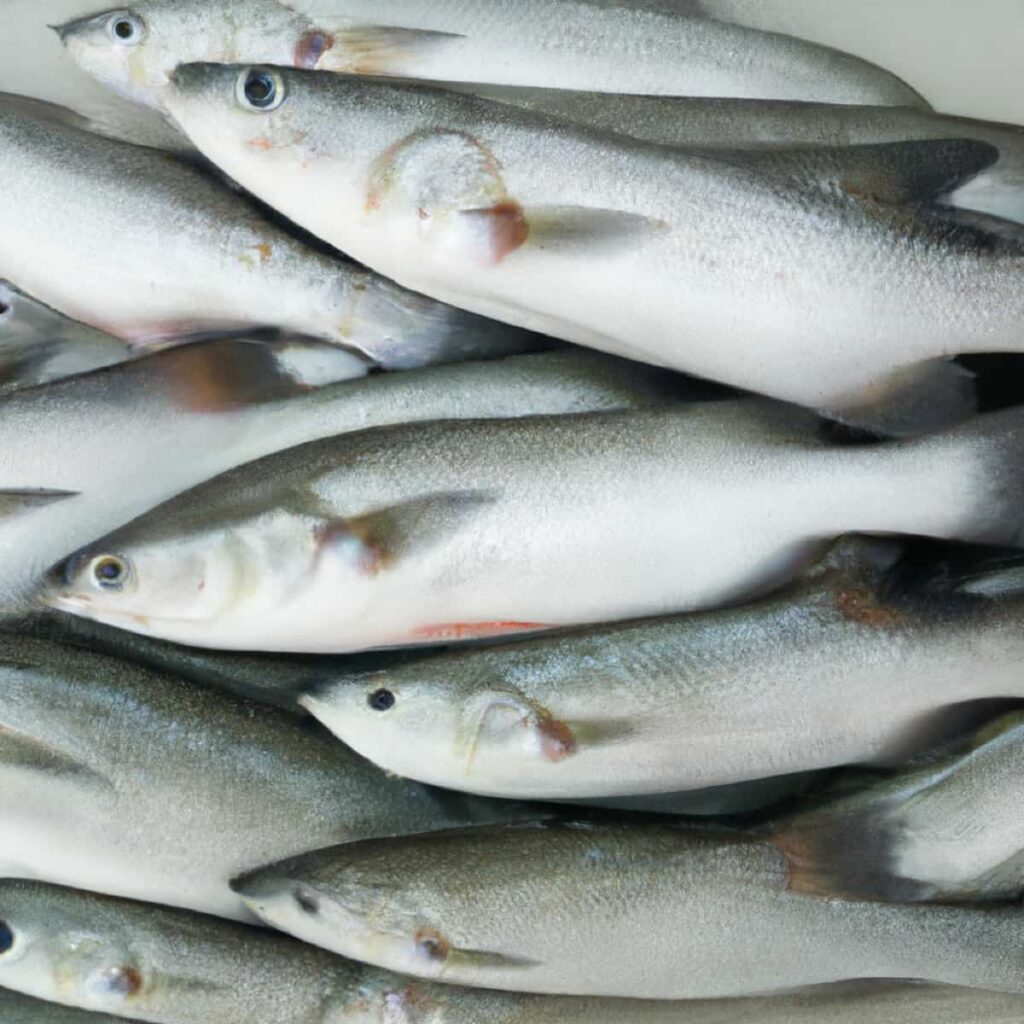
How to Start Milkfish Farming
What is Milkfish Farming?
Milkfish farming, featuring the popular species Chanos chanos, is highly suitable for coastal areas. These fish possess a streamlined body with a large forked caudal fin, lack teeth, and predominantly consume algae and invertebrates. They exhibit remarkable tolerance to a wide range of temperatures (15-40°C) and salinity levels (0-145 ppt). The adult milkfish reproduce in the open sea at depths of around 50 meters.
Female fish, aged 6-7 years, spawn annually or biannually, releasing a significant quantity of eggs (around 3-7 lakh eggs per kilogram of body weight) at a time. These eggs, ranging from 1.10-1.25 mm in diameter, hatch within 24 hours. Ocean currents carry the pelagic larvae and eggs and eventually reach coastal waters.
During the tidal inflow, the young Milkfish enter the coastal waters, where the mangrove ecosystem provides abundant micro and macro live feed organisms and high organic matter. This becomes an excellent feeding ground for the Milkfish until they reach the sub-adult stage. Upon reaching a size of 200-300 grams, the Milkfish migrate back to the sea. Adult fish primarily feed on detritus mats composed of plankton, microalgae, and associated organisms.
Site Selection for Milkfish Farming
- Milkfish farming can be initiated in existing brackishwater fish farms.
- Ideal site conditions include a minimum water depth of 0.8 – 1 meter, optimal salinity of 10 – 30 ppt, 20 – 30°C temperature of 7.5 – 8.5, and dissolved oxygen (DO) levels of 4.0 – 5.0 ppm.
- Milkfish can tolerate low DO and higher ammonia levels than other fish species.
- Sandy or silty clay loam soil is preferable, and good access to roads and a reliable power supply are necessary for market reach.
Nursery Pond Preparation and Lab-lab Production
- Milkfish fry of 1.0 – 1.5 cm can be stocked in outdoor nursery ponds after 25 – 30 days of indoor rearing.
- Pond preparation involves draining, drying, repair work, predator eradication, liming, and tilling.
- Fertilizing the pond with organic/inorganic fertilizer stimulates the growth of natural food organisms.
- The initial manuring with chicken manure and subsequent application of urea aids in the breakdown of nutrients.
- Gradual increase in water depth over 15 – 30 days prepares the pond for stocking milkfish fry.
- Extended pond preparation (up to 45 days) promotes the growth of micro-benthic food known as “lab-lab.”
- Milkfish fry of 1-2 cm is stocked at 20-30 no/m² density and fed on lab-lab.
- Regular urea application helps sustain lab-lab growth.
- Pond water should be kept from being freshened/released for at least three days to support the growth of benthic algae.
- Hapa can be used for nursery rearing in brackish water ponds or lagoons.
In case you missed it: Fish Farm Operations Management: Month-wise Maintenance for Better Profits
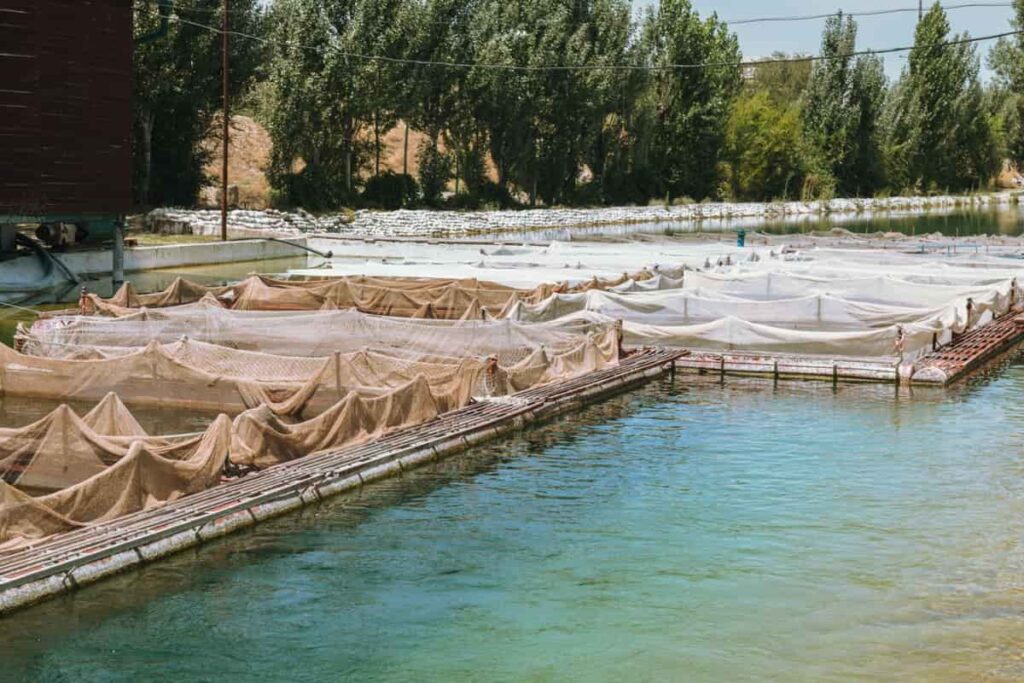
Transition/Stunting Ponds for Milkfish Farming
- Transition ponds are used to reserve fry for later stocking in grow-out ponds.
- Stunting methods help maintain a year-round supply of fingerlings.
- Stunted fry/fingerlings show similar growth patterns compared to non-stunted ones.
- Stunted milkfish production involves stocking fingerlings at a rate of 15/m² in transition ponds with the natural food and occasional rice bran feeding.
- After one year, stunted fingerlings attain a 35-50 g weight with 50-60% survival.
- Bigger-sized 40-80 g fingerlings are preferred in pens and floating net cages for grow-out culture.
How To Increase Milkfish Production in Aquaculture?
Seed Production of Milkfish
Broodstock Management: Sub-adult fish are collected and reared in floating sea cages or earthen saline ponds to develop as broodstock. Broodstock ponds are fertilized to produce natural feed called “lab-lab,” which consists of various organic organisms. Broodstock is fed twice daily with a floating pelleted feed, reaching maturity within five years.
Water Quality Management: Water is sourced from the sea or a well and undergoes filtration and disinfection. Suspended particles are removed through sedimentation, followed by chlorination and de-chlorination. Additional filtration methods, such as slow sand filters, pressure sand filters, and cartridge filters, are used. UV sterilizers or ozonizers are employed for final disinfection, and EDTA is added to remove heavy metals.
Spawning of Milkfish
Induced Spawning: Male and female fish mature at around 4-5 years of age. Spawning is induced by injecting HCG or a combination of LHRH-a and 17 alpha-methyl testosterone. The male-to-female ratio is maintained at 2:1, and spawning occurs in a floating cage covered with a closed mesh net. Fertilized eggs are collected, and the brooders are returned to the broodstock pond.
Incubation: Egg Incubation- Fertilized eggs are disinfected and incubated in FRP tanks with mild aeration. The eggs hatch within 20-35 hours at a 26-32°C temperature and salinity of 29-34 ppt. The newly hatched larvae have a yolk sac and exhibit phototaxis and rheotaxis.
Live Feed Production: Cultivation of Live Feed- Seawater is filtered, fertilized, and inoculated with rotifers and freshly harvested algae. Rotifer density is adjusted over several days, and pure stock cultures of phytoplankton and zooplankton are maintained.
In case you missed it: Project Report of Pangasius Fish Farming: Cultivation Economics, Production Cost, and Profit Analysis
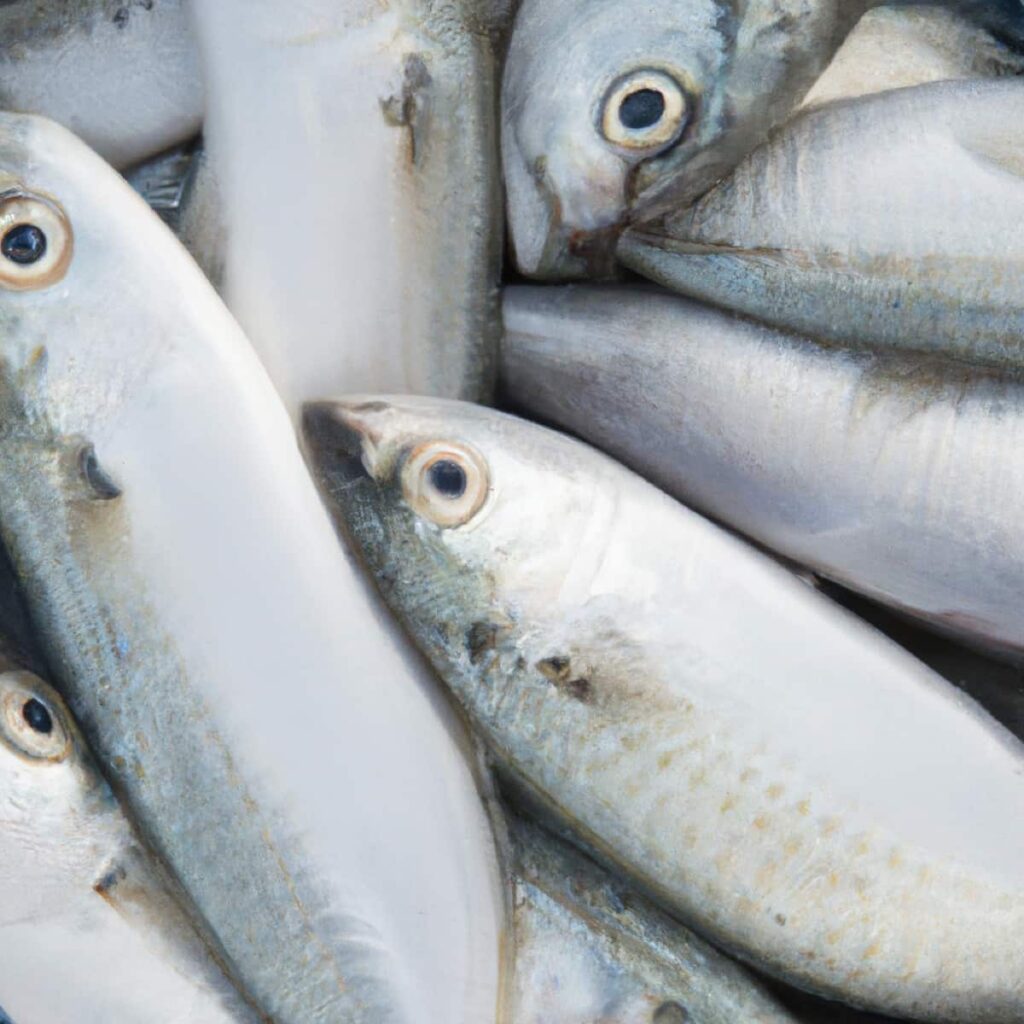
Rearing of Larvae: Larval Rearing- Larvae are transferred to outdoor cement tanks containing filtered seawater with appropriate salinity. Live algae are added to maintain phytoplankton density, and larvae are initially fed enriched Brachionus plicatilis. Artemia nauplii and formulated microencapsulated feed are introduced as the larvae grow.
Best Practices for Boosting Milkfish Farm Productivity
Site Selection and Pond Construction
- Use a rectangular pond with a minimum area of 0.2 ha and a depth of 1 m.
- Install sluice gates for water regulation.
- Cover the pond with bird netting to prevent predatory birds.
- Fence the sides of the pond with a stiff net to keep out predatory animals.
Pond Preparation
Apply inorganic fertilizers and organic manures to ensure the availability of natural feed like “lab lab” and green algae.
Water Quality Requirements
- Maintain salinity levels between 10-30 ppt.
- Keep the temperature between 26-30°C.
- Ensure water transparency of 25-40 cm.
- Maintain pH levels between 7.5-8.5.
- Dissolved oxygen (DO) levels should be above 4.5 ppm.
Stocking
- Raise water depth to 1 m after developing the “lab.”
- Stock seeds (4-6 cm) in a happy or pen for further nursery rearing.
- Stock fingerlings at a density of 7,500 no./ha for monoculture or 5,000 no./ha for polyculture, with pearl spot at 15,000 no./ha.
Feeding
- Milkfish primarily feed on natural food available in the pond.
- Provide supplementary feeding with formulated floating pellets, rice bran, and wheat bran.
- Ensure protein content of 20-32% in the feed during the grow-out stage.
- Feed twice daily (morning and evening).
In case you missed it: The Rise of Fish Farming in Kenya: Key Rules to Start from Scratch
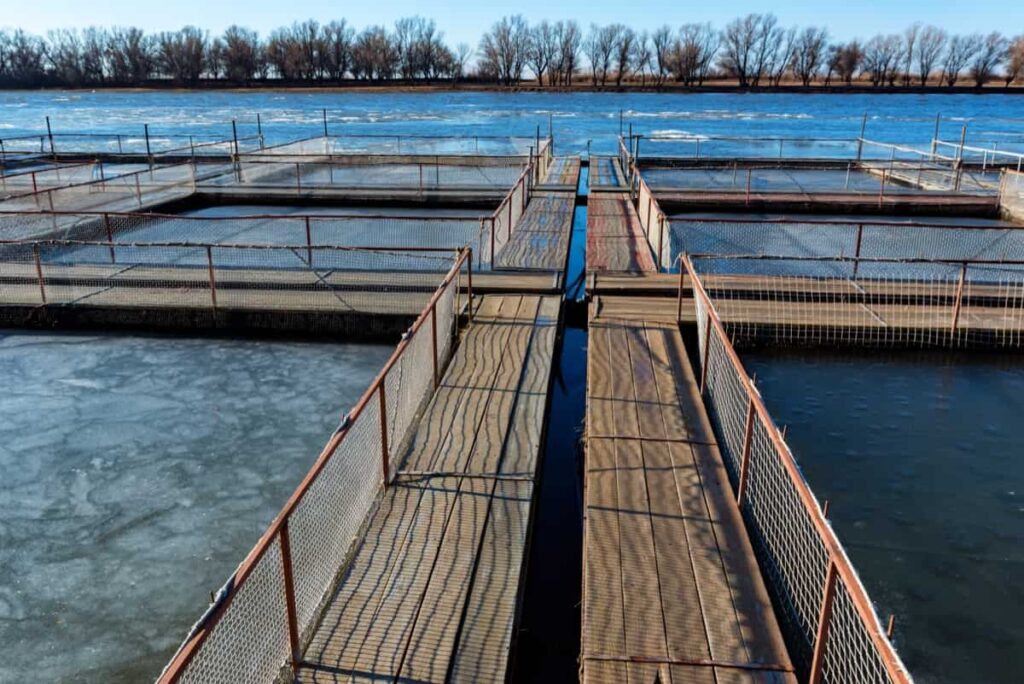
Care And Maintenance
- Periodically lime the pond if necessary.
- Add cow dung to enhance “lab lab” production when density decreases.
- Maintain water depth of 1-2 m and replace 20-30% of water fortnightly.
- Install paddle-wheel aerators (2 hp/ha) if targeting 6 t/ha fish production.
- Monitor growth through periodic sampling.
Harvesting
- Milkfish reaches marketable size (1 kg) within 8-10 months with an 80% survival rate.
- Use seine nets, gillnets, or drag nets for harvesting.
- Employ “cull harvesting” with appropriate mesh-size gillnets to capture fish of desired market size.
- Handle fish carefully to prevent injuries and scale loss.
- Market harvested fish daily and prefer fresh fish over frozen fish.
Optimal Feeding Techniques for Milkfish Farming
Feed Composition: Milkfish require a well-balanced diet with appropriate protein content, ranging from 20-32% during the grow-out stage. Formulated floating pellets, rice bran, and wheat bran are commonly used as supplementary feeds. The feed size should be suitable for the fish size, ranging from 0.8 mm to 6.0 mm.
Feeding Frequency and Amount: Milkfish thrive on natural food in the pond but also benefit from regular feeding. The feed should be given twice daily, in the morning and evening. The feeding rate depends on the fish size, typically 2% to 5% of the average body weight.
Feeding Techniques: Broadcasting method: Spread the feed evenly across the pond surface. Hand-feeding method: Feed is distributed manually along designated feeding areas. Automatic feeding method: Utilize automated feeders that dispense feed at regular intervals.
Feeding Management: Observe feeding behavior and adjust the feeding rate accordingly. Monitor water quality parameters like dissolved oxygen, pH, and ammonia levels to ensure optimal feeding conditions. Regularly assess fish growth and adjust feeding strategies if necessary.
Feed Conversion Ratio (FCR): FCR indicates the efficiency of feed utilization by fish. The ideal FCR for milkfish farming ranges from 1.2 to 1.5, indicating that 1.2 to 1.5 kg of feed is needed to produce 1 kg of fish.
What Are the Key Factors Affecting Milkfish Production?
Water Quality: Optimal water quality parameters include temperature (26-30°C), salinity (10-30 ppt), transparency (25-40 cm), pH (7.5-8.5), and dissolved oxygen (>4.5 ppm). Poor water quality negatively affects milkfish growth and survival.
Feeding: Milkfish mainly rely on natural food in the pond, supplemented with formulated feeds. Proper nutrition, including protein content (20-32% in the grow-out stage), is crucial for optimal growth.
Stocking Density: Stocking density affects growth, survival, and overall production. Recommended densities range from 5,000 to 7,500 fingerlings per hectare, depending on monoculture or polyculture.
Pond Management: Adequate pond preparation, fertilization, and maintenance of proper water depth are essential. Regular liming, maintaining “lab lab” availability and periodic water exchange contribute to successful milkfish production.
Disease Management: While Milkfish is generally disease-resistant, appropriate pond management and biosecurity measures are important to prevent diseases and minimize stress.
Harvesting Techniques: Proper harvesting methods, such as using suitable nets and minimizing stress during handling, help maintain fish quality.
In case you missed it: The Rise of Fish Farming in Nigeria: Key Rules to Start from Scratch
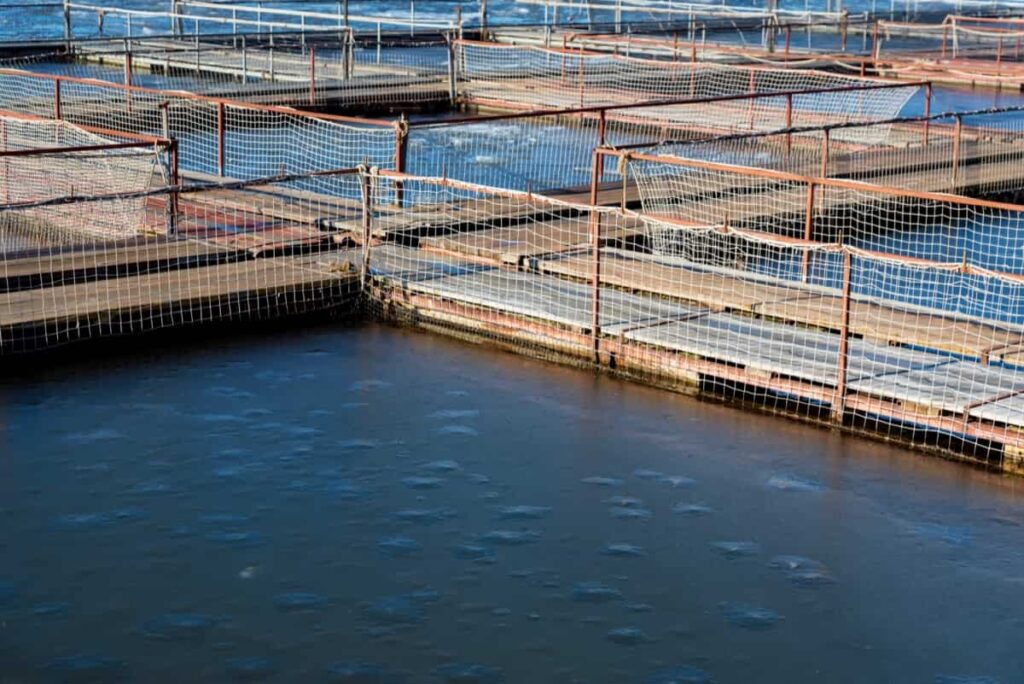
Effective Milkfish Grow-Out Farming Strategies
Pen Culture: Utilize shallow brackish water areas with high productivity for constructing pens. Stock 40-60g milkfish fingerlings at a density of 30,000-40,000/ha. Partially harvest larger fish, feeding on natural lab-lab or Lamut. High-density pen culture can yield 10-20 tonnes/ha with supplemental feed.
Cage Culture: Set up small cages in shallow coastal bays or deeper sea waters. Rear 40-60g fingerlings at a density of 5-30/m³. Provide formulated floating or semi-sinking pellets as feed. Cage culture can yield 10-20 kg/m³ depending on water quality.
Pond Culture by Extensive Traditional Farming: Stock 7-10cm fingerlings in traditional ponds with a density of 1000-1500/acre. Harvest two crops per year using natural food like lab-lab or Lumut. With lab-lab feeding, traditional farming can yield 1.5-2.5 tons/ha/year.
Monoculture: Utilize existing fish or shrimp farms for Milkfish monoculture. Provide artificial and natural feed for higher production. Harvest marketable fish (200-300g) after 3-4 months.
Polyculture: Combine Milkfish with compatible species in brackishwater ponds. Adjust stocking densities based on water depth and species compatibility.
Intensive Farming: Suitable for ponds with 1.0-1.5m water depth using aerators and feeding devices. Stock 7-15cm fingerlings at a density of 8,000-30,000/ha. Supplement with floating pellets (24-28% protein, 3-4% fat). Harvest 200-300g Milkfish after 3-4 months, achieving 4-15 tons/ha/year.
Innovative Technologies for Enhancing Milkfish Farm Yields
Integrated Multi-Trophic Aquaculture (IMTA): IMTA is a sustainable approach that combines milkfish farming with the cultivation of complementary species, such as seaweeds or filter-feeding organisms. This integrated system reduces waste buildup and improves overall farm productivity.
Recirculating Aquaculture Systems (RAS): RAS technology involves filtering and recycling water within the fish culture system, reducing water usage and minimizing environmental impacts. It allows for optimal control of water quality parameters, resulting in improved growth rates and higher yields.
Automated Feeding Systems: Advanced feeding systems use sensors and algorithms to provide precise and timely feeding, optimizing feed utilization and reducing waste. These systems can adjust feed amounts based on fish behavior and environmental conditions, leading to better growth and cost-efficiency.
Genetic Improvement Programs: Selective breeding programs aim to develop milkfish strains with desirable traits, such as faster growth, disease resistance, and improved feed conversion. Farmers can obtain improved fish stocks that exhibit higher productivity and performance through genetic selection.
Remote Monitoring and Control Systems: Utilizing sensors, cameras, and remote monitoring technology, farmers can monitor water quality parameters, feeding patterns, and fish behavior in real time. This allows for timely intervention and adjustments, optimizing farm conditions and maximizing yields.
In case you missed it: From Water Quality to Feeding Habits: A Comprehensive Guide to Successful Fishpond Management
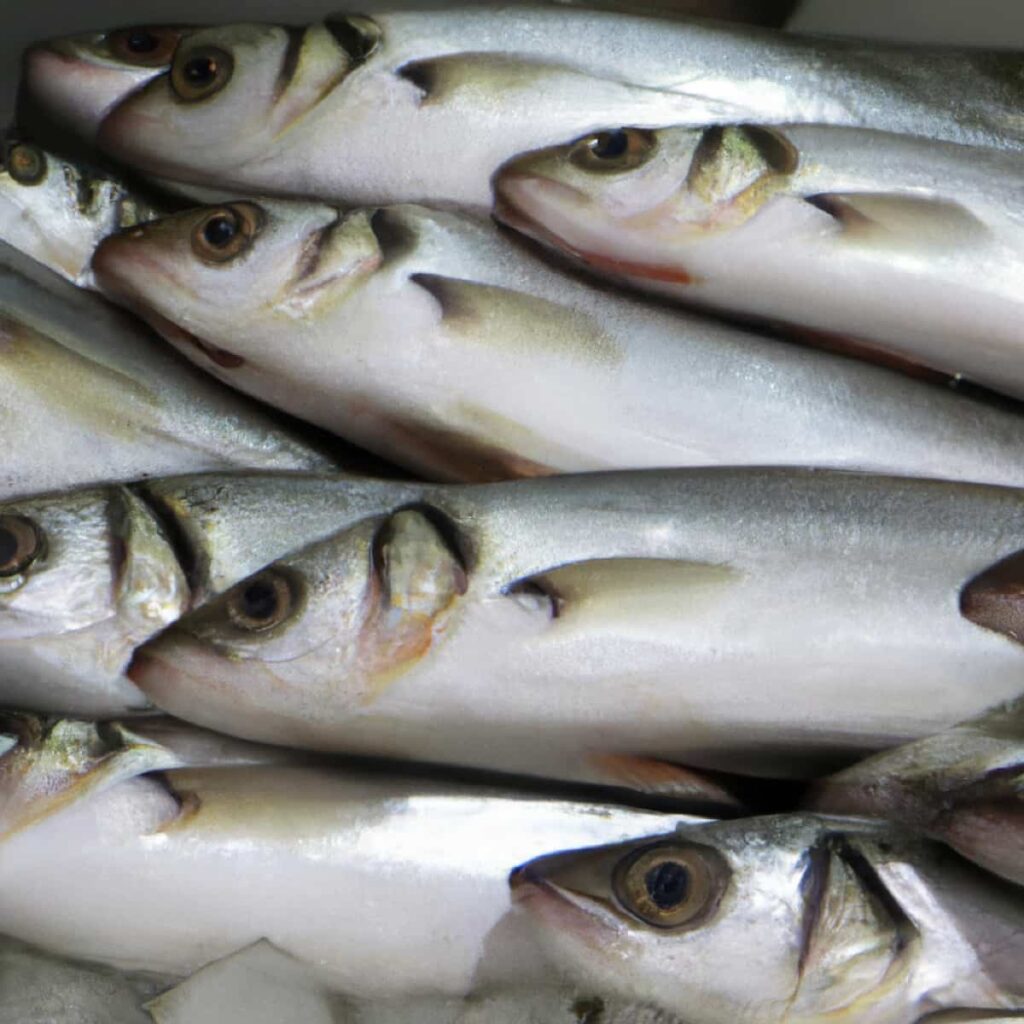
Milkfish Farming Strategies for Higher Profitability
- The Philippines is the main producer and consumer of Milkfish, primarily consumed fresh with some processed for canning.
- Harvesting and marketing occur when Milkfish reach 20-40 cm (200-500 g) in size.
- Partial harvesting involves using dragnets or gillnets for uniformly grown Milkfish weighing over 200 g.
- Complete harvesting methods include pond draining, net-cage hauling, and seins or gillnets.
- Freshly harvested milkfish are easily sold in local markets.
- Processing techniques like filleting, deboning, smoking, canning, and freezing enhance commercial value and taste.
- Farmed Milkfish (5-150 g) are valuable as live bait for tuna fishing.
- Milkfish fetches a good price in national and international markets, around 150-200 INR/kg in India.
- Growing demand in Southeast Asian countries increases farmers’ need for milkfish fingerlings.
Effective Disease Management in Milkfish Production
Disease occurrence in milkfish production is relatively low compared to other cultured finfish species, as Milkfish is a hardy species. However, high stocking density can increase the risk of parasitic infections. Wild seeds used for farming may also carry parasitic infections.
Additionally, stress and rough handling during milkfish farming can result in deformities and fatalities, frequently due to bacterial infections. Proper disease management practices, including regular health monitoring, optimal stocking densities, and appropriate handling techniques, are essential to minimize the occurrence and impact of diseases in milkfish production.
Conclusion
By implementing the best practices for milkfish farming, including proper site selection, pond preparation, water quality management, stocking strategies, feeding techniques, and disease management, farmers can effectively supercharge their milkfish farms and achieve higher productivity and profitability.
- Profitable Village Farming Business Ideas in 2024
- High-Yield Aquaculture: Fast-Growing Fish for Farming
- Effective Fish Pond Construction Techniques for Beginners
- Irrigation and Water Management in Pineapple Farming
- Blossom to Harvest: Mastering Flowering and Pollination in Papaya Farming
- Pig Fattening Essentials: From Selection to Sale for Beginners
- Raising Wagyu Cattle: A Complete Guide for Premium Beef Production
- Soil Types and Their Water Holding Capacity
- Optimizing Irrigation Schedules for Coconut Groves for Enhanced Yield
- Espresso Your Garden: Coffee Grounds for Healthier Acid-Loving Plants
- The Best Soil Mix for Snake Plants: How to Mix Your Own Snake Plant Soil
- Green Thumb Success: Expert Tips for Cultivating Greenhouse Beans All Year Round
- Bloom All Year Round: The Ultimate Guide to Indoor Hyacinth Care
- Eco-Friendly Gardening: How to Make Liquid Fertilizer from Kitchen Waste
- Ultimate Guide to Grow Anise in Pots: Explore Seed Propagation to Harvesting
- Guide to Raising Chester White Pigs: Discover Breed Facts to Growth Management
- Mastering the Elegance: The Ultimate Guide to Weeping Cherry Tree Care, Planting, and Maintenance
- Ultimate Guide to Planting Garlic in Grow Bags: Growing Strategies for Beginners
- How to Fix Spider Plant Leaf-Related Problems: Natural and Organic Remedies
- 10 Reasons Why Your Tulsi Plant is Shedding Leaves: Home Remedies and Solutions
- Optimizing Growth and Yield: The Advantages of Palm Bunch Ash Fertilizer
- Utilizing Neem Oil Extract as a Natural Pesticide for Hydrangea
- From Soil to Harvest: Various Ways in Which Farmers Can Use AI Tools
- Steps to Encourage and Induce Citrus Flowers: A Comprehensive Guide
- How to Fix Snake Plant Leaf-Related Issues: Natural and Organic Remedies
- Transform Your Garden into a Fragrant Oasis with Raat Ki Rani (Night Blooming Jasmine)
- Discover the Ideal Chicken Breeds for Philippine Farms
- How to Create a Poultry Egg Farm Business Plan for Profits
- Grow Lemon Cucumbers Like a Pro: Insider Techniques for Bountiful Yields
- Ultimate Guide to Caring for Your Pink Princess Philodendron: Tips for Thriving Variegation
- Areca Nut Profit Per Acre: Calculating Yield and Cost of Cultivation
- How Kaveri Chicken is Becoming a More Profitable Breed in Indian Backyards
- Transform Your Barn: 9 Steps to Convert a Horse Stall into a Chicken Coop
- Exploring Suffolk Sheep Disadvantages with Limitations and Challenges
- Guide to Solving Potted Lemon Tree Problems: How to Revive Lemon Tree in Containers
- Steps to Encourage Female Pumpkin Flowers: Best Strategies for More Flowers and High Yields
